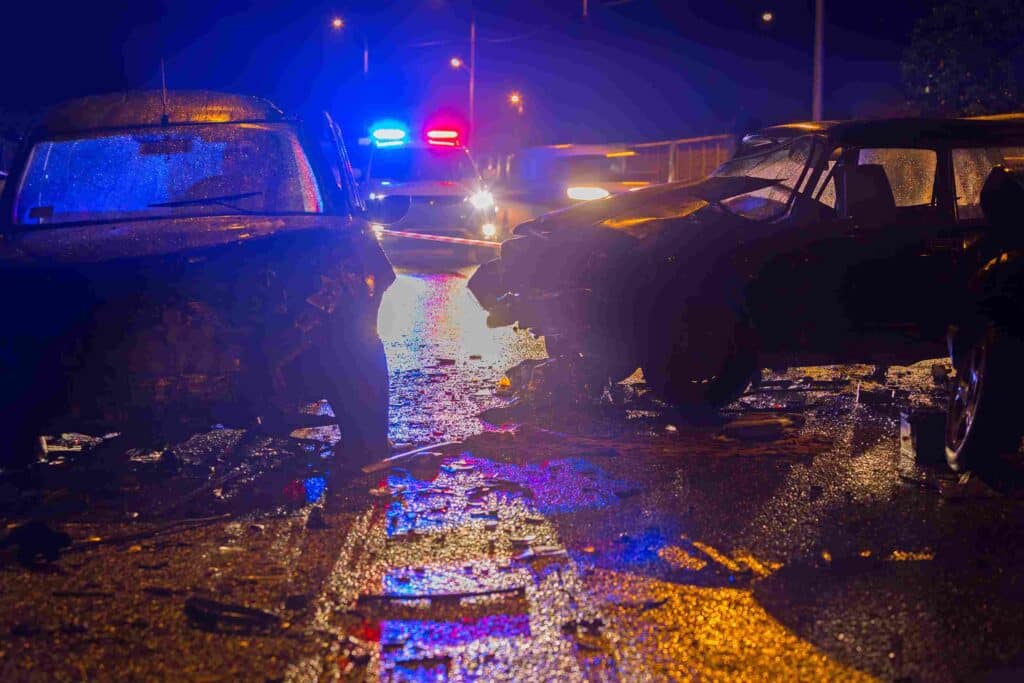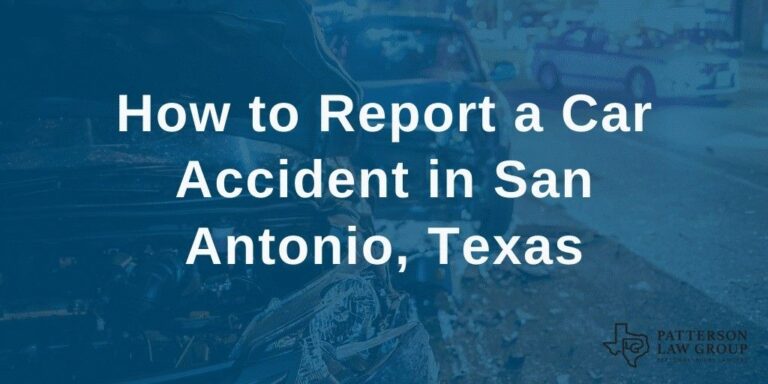The aftermath of a car accident can be chaotic. Chances are there are many people and a lot of activity at the scene, leaving you confused and disoriented.
In this confusion, you may be unsure who was at fault or if you can recover compensation for your injuries and damages. Unfortunately, determining fault can be complex and involve several factors.
If you are in this situation, an experienced San Antonio car accident attorney from Patterson Law Group can help. We can gather evidence, talk to witnesses, and even use experts to recreate the accident to determine fault.
Here, you can learn more about determining fault in a San Antonio car accident and the role of Texas’s comparative negligence law.
Determining Fault in a San Antonio Car Accident
Understanding how fault is determined in a San Antonio car accident is crucial for anyone involved in such an incident. The process involves a combination of state laws, evidence gathering, and sometimes, the professional judgment of legal experts.
Here’s a closer look at how fault is assessed in San Antonio car accidents.
Examination of Evidence
The first step in determining fault is the thorough examination of evidence. This includes reviewing the accident scene photos, vehicle damage, police reports, and eyewitness accounts.
Each piece of evidence provides crucial insights into what happened and helps in piecing together the events leading up to the accident. For instance, skid marks on the road can indicate sudden braking, while damage to the vehicles can suggest the point of impact and, consequently, who might have been at fault.
Texas Traffic Laws
Understanding Texas traffic laws is essential in determining fault. These laws serve as a benchmark for evaluating each party’s actions at the time of the accident. For example, if a driver violated traffic laws, such as running a red light or speeding during the collision, this would significantly influence the fault determination. Legal professionals often reference these laws to argue fault in car accident cases.
The Basics of Comparative Negligence in Texas
Comparative negligence, also known as proportionate responsibility in Texas, is a legal doctrine that divides fault among the parties involved in an accident. Unlike the traditional binary system of fault, where one party is deemed entirely at fault, comparative negligence acknowledges that multiple parties can share responsibility for an accident.
Understanding how comparative negligence works is crucial for anyone involved in a car accident in San Antonio. Essentially, it means the compensation you can receive for an accident will be reduced by the percentage of fault attributed to you. For instance, if you’re found to be 20% at fault in an accident, your compensation will be reduced by that percentage.
Why You Need a San Antonio Car Accident Lawyer
Given the complexities of comparative negligence, having a skilled San Antonio car accident lawyer by your side is invaluable. A proficient attorney can navigate the intricate legal landscapes, ensuring that the fault is fairly assessed and you receive the compensation you deserve.
They play a critical role in gathering evidence, reconstructing the accident scene, and negotiating with insurance companies, all of which are pivotal in influencing the outcome of your claim.
An accident attorney in San Antonio will also protect your rights throughout the legal process. They can offer comprehensive advice on how to proceed with your claim, represent you in court if necessary, and work tirelessly to minimize your percentage of fault. This support is beneficial and often essential for securing a favorable outcome.
Impact of Comparative Negligence on Your Claim
The application of comparative negligence can significantly impact the compensation you receive. For example, in a scenario where the total damages amount to $100,000, and you are found to be 30% at fault, your compensation would be reduced to $70,000. This reduction underscores the importance of accurate fault determination and why having an experienced accident attorney in San Antonio is crucial.
It’s also worth noting that Texas follows a modified comparative negligence rule with a 51% bar. If you are found to be more than 50% at fault for the accident, you will not be eligible for compensation. This threshold highlights the critical nature of establishing fault accurately and advocating effectively for your position.
Strategies to Mitigate Your Fault in an Accident
Working with a San Antonio car accident lawyer can help you implement strategies to mitigate your fault in an accident. These strategies may include:
- Gathering Comprehensive Evidence: Collecting detailed evidence from the accident scene, including photos, witness statements, and police reports, can provide a clearer picture of the events leading up to the accident.
- Accident Reconstruction: In some cases, reconstructing the accident with the help of experts can shed light on the dynamics of the crash and influence fault determination.
- Negotiating with Insurance Companies: An experienced lawyer can negotiate effectively with insurance companies, who often aim to minimize their payout by attributing a higher degree of fault to you.
Contact Patterson Law Group for Help with Your San Antonio Car Accident Claim
Understanding comparative negligence is essential for anyone involved in a car accident in San Antonio. This principle directly affects the compensation you can receive and emphasizes the importance of having an experienced San Antonio car accident lawyer by your side.
By arming yourself with knowledge and expert legal assistance, you can navigate the complexities of your car accident claim more effectively, ensuring that your rights are protected and that you secure the compensation you rightly deserve.
Remember, each car accident case is unique, and the application of comparative negligence can vary widely. Therefore, consulting with an accident attorney in San Antonio is not just advisable; it’s a vital step in understanding your legal position and maximizing your claim’s potential.






